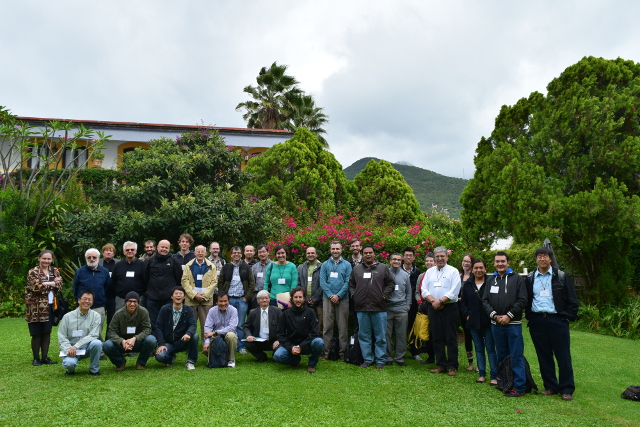Harmonic Analysis, $\overline{\partial}$, and CR Geometry (15w5074)
Organizers
Tatyana Barron (University of Western Ontario)
Siqi Fu (Rutgers University-Camden)
Malabika Pramanik (UBC)
Andrew Raich (University of Arkansas)
Emil Straube (Texas A&M University)
Alexander Tumanov (University of Illinois at Urbana-Champaign)
Description
The Casa Matemática Oaxaca (CMO) will host the "Harmonic Analysis, $\overline{\partial}$, and CR Geometry" workshop from October 18th to October 23rd, 2015.
Interplay between several complex variables and other areas in mathematics has led to amazing discoveries with lasting repercussions. For example, Lewy's equation, which arises from the tangential Cauchy-Riemann equation, was the first example of a linear partial differential equation with no smooth solution. Mathematicians study several complex variables from many points of view -- partial differential equations, CR geometry, and harmonic analysis just to name a few. Although researchers often investigate the subject from a particular perspective, many of the most dramatic and striking recent results use ideas and tools from every viewpoint. A major goal of the workshop is to bring together experts from across the discipline to teach and learn from another. Experience has shown that increasing the shared knowledge base leads to powerful advances and new collaborations. Additionally, we have made an effort to include a vertically integrated mix of researchers so that early career mathematicians have ample opportunity to discuss math with and learn from the leaders in the field.
The topics that this workshop will cover include: the $\bar\partial$-Neumann Laplacian, a prototype of an elliptic operator with non-coercive boundary conditions; the application of real variable harmonic analysis techniques to the study of several complex variables; the spectral theory of the complex Laplacian, a subject closely intertwined with the semi-classical analysis of the Schr\"odinger operator; and CR geometry, the subtle and critical object in determining the properties of the solutions of the
other problems as well as a thriving and fundamental subject in its own right.
The Casa Matemática Oaxaca (CMO) in Mexico, and the Banff International Research Station for Mathematical Innovation and Discovery (BIRS) in Banff, are collaborative Canada-US-Mexico ventures that provide an environment for creative interaction as well as the exchange of ideas, knowledge, and methods within the Mathematical Sciences, with related disciplines and with industry.
The research station in Banff is supported by Canada's Natural Science and Engineering Research Council (NSERC), the U.S. National Science Foundation (NSF), Alberta's Advanced Education and Technology, and Mexico's Consejo Nacional de Ciencia y Tecnología (CONACYT). The research station in Oaxaca is funded by CONACYT.






